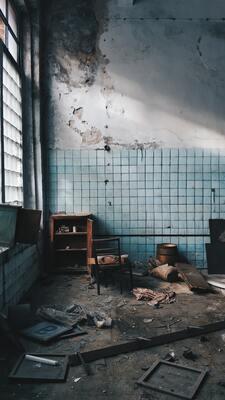- 1-905-452-8193
- Contact Us
- Member Login
- Get Listed Today
- 220,911 members

Water is detrimental to wooden furnishings, underscoring the importance of prompt water damage restoration. Because wood is naturally absorbent, it can quickly draw in moisture. Whether it's from an unnoticed spill, household flooding, or other unexpected incidents, moisture can compromise your wooden items. As wood absorbs moisture, it can swell, discolor, and weaken, often leading to warping or distortion.
To counteract this, addressing moisture problems without delay is essential to limit the scale of potential repairs. Explore methods to restore water-damaged wooden furnishings and recognize the significance of consulting water damage restoration professionals for comprehensive home repairs.
Immediate Drying to Limit Harm
If your wood has been affected by water, dry it promptly. If feasible, move the furniture to a warm area with ample ventilation. Utilizing fans can enhance the drying rate. On sunny and warm days, positioning the furniture in direct sunlight can also be beneficial. However, wet furniture should not be left outside during cold temperatures as it remains moist and becomes susceptible to mold. Once dried, ensure the furniture is moved indoors; excessive sunlight can cause the wood to split.
Handling Mold and Mildew Growth
Despite your quickest efforts to dry the wood, mold and mildew can still proliferate. Typically, fungus can emerge within 24 to 48 hours. All mold needs to thrive are food, water, and oxygen, often resulting from minor leaks, condensation, or high humidity. To combat mold and mildew, begin by vacuuming with a HEPA filter, followed by wiping with an anti-fungal solution. After eradicating the fungus, consider refinishing the furniture to restore its appearance and shield it from future damage.
Addressing Water Marks
Wood is prone to staining when water seeps past its protective layer. Several techniques can alleviate these marks if caught early. Starting with 3% peroxide can be both cost-effective and less demanding. If this does not work, consult specialized companies like Clean Source of Columbia for potent stain removers. Ensure you're familiar with safety precautions before using any product.
Refinishing with Sandpaper or Scraper
If the damage is extensive, removing the topmost wood layers might be necessary for refinishing. Employ an electric sander with 220-grit sandpaper while ensuring proper ventilation. Always sand in the wood grain's direction. For stubborn stains, chemical strippers can be useful. After the stripper reacts, use a scraper to remove the compromised wood surface, followed by another sanding session.
Sealing with Wax or Varnish
After sanding and stain removal, a protective layer should be applied to the wood. Depending on the desired appearance and protection level, either wax or varnish can be used. While wax offers a protective layer, varnish delivers a more resilient finish that deeply penetrates the wood. If using wax, apply it sparingly with a cloth and then buff it to achieve a glossy sheen. For varnish, apply a clear layer, making it both water-resistant and bug-resistant, followed by a second coat after the first dries.
Seeking Professional Assistance for Major Damages
For more severe household damages beyond just furniture, it's vital to engage water damage restoration professionals. Structural components like walls, flooring, and ceilings might also be impacted. For such repairs, experts from companies like Kingsley LLC can offer guidance on wood furniture repair and provide estimates for comprehensive water damage restorations.
|
|
